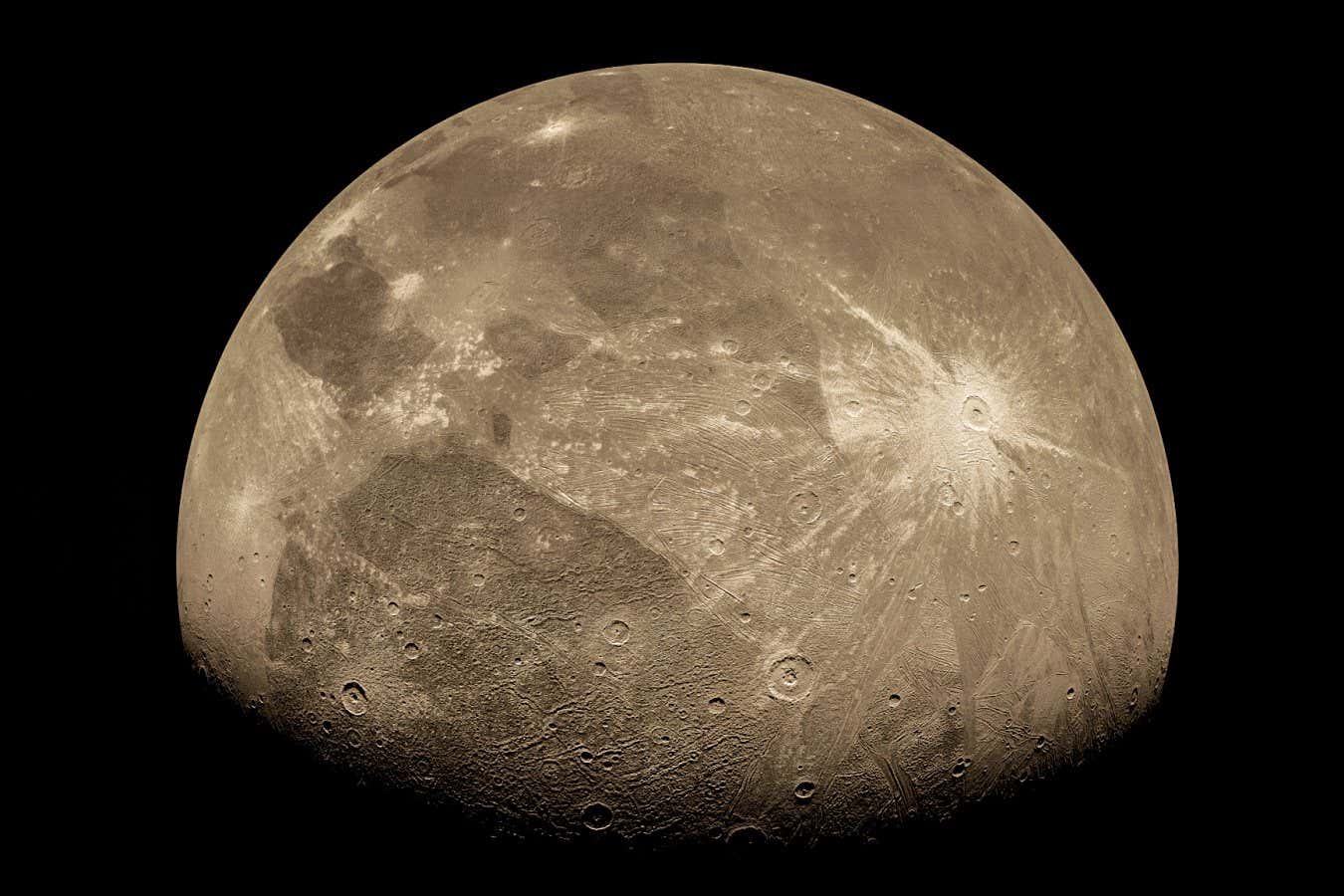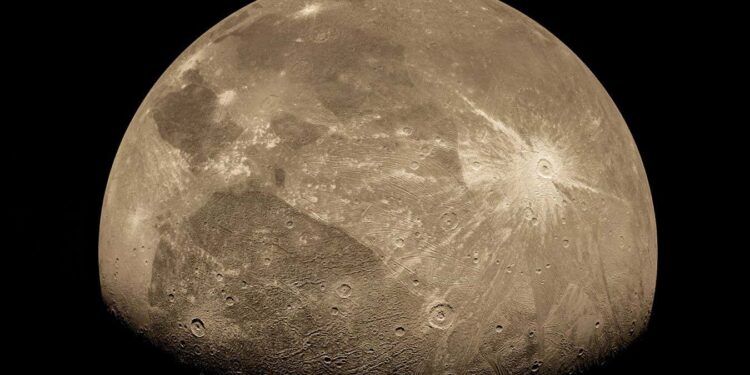
A view of Ganymede from NASA’s Juno spacecraft
JunoCam/NASA/JPL-Caltech/SwRI/MSSS/Kalleheikki Kannisto
Jupiter’s moon Ganymede could be a vast dark matter detector, and upcoming space missions might be able to spot distinctive dark matter craters on its ancient surface.
Physicists searching for dark matter usually look for tiny, extremely light particles that interact weakly with standard matter, requiring large and well-insulated underground detectors. Another kind of dark matter particle could instead be very large – from the size of basketballs to asteroids – but also vanishingly rare, interacting with normal matter extremely infrequently. To detect large dark matter particles, you would need a detector the size of a moon or planet to make up for their sparsity.
William DeRocco at the University of Maryland has proposed that the largest moon in the solar system, Ganymede, might contain evidence of these massive dark matter particles. His work suggests they would form distinctive craters in the moon’s icy surface that are preserved for millions of years thanks to its geological inactivity.
DeRocco calculated how far a massive dark matter particle would penetrate Ganymede’s thick icy shell, and found it would go much deeper than a typical asteroid, reaching into the moon’s subsurface ocean and bringing up distinctive minerals.
Upcoming missions to Jupiter and Ganymede, such as NASA’s Europa Clipper and ESA’s JUICE, could spot signs of these dark matter craters from above. DeRocco calculates that they would look comparatively small, as well as isolated from other ruptures or geological features. The spacecraft could then make further observations. “If you used something like ground-penetrating radar, you might be able to see this column of melted ice going all the way down through the ice,” says DeRocco.
Using a moon-sized dark matter detector could help look for particles that are impossible to find on Earth, says Zachary Picker at the University of California, Los Angeles. “No experiments on Earth are going to be able to find something like a bowling ball-sized piece of dark matter, or [particles the size of] a fridge or a car. They just don’t impact often enough.”
The proposal is detailed and well-thought through, says Bradley Kavanagh at the University of Cantabria in Spain, but there also aren’t any particularly strong physical reasons for believing such heavy dark matter particles exist. “It’s more about trying to look at all the possibilities,” he says. “I would say these are quite exotic objects. They’re incredibly dense and would be held together by very strong forces in some dark sector.”
Topics:
- dark matter/
- space exploration
Source link : https://www.newscientist.com/article/2492767-jupiters-moon-ganymede-could-be-a-giant-dark-matter-detector/?utm_campaign=RSS%7CNSNS&utm_source=NSNS&utm_medium=RSS&utm_content=home
Author :
Publish date : 2025-08-18 08:00:00
Copyright for syndicated content belongs to the linked Source.







